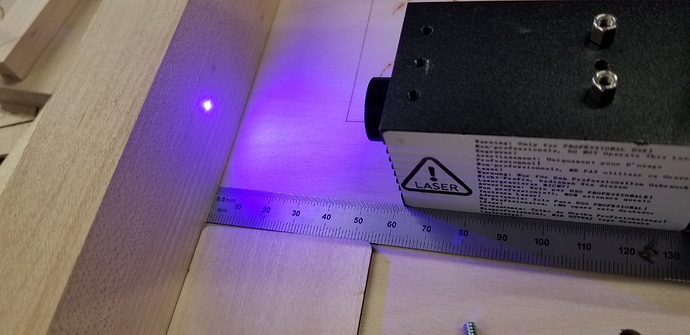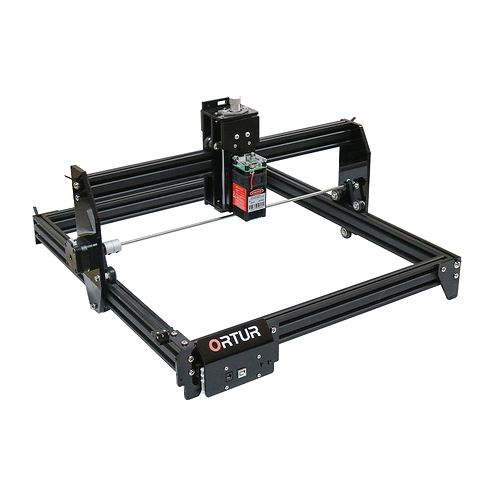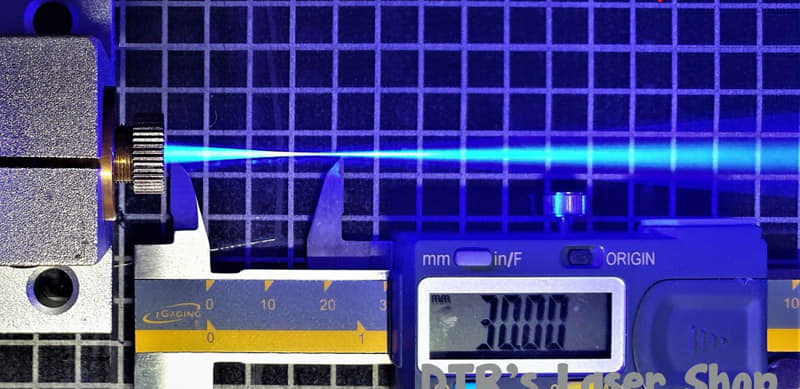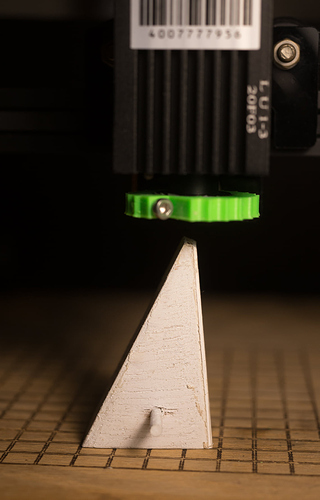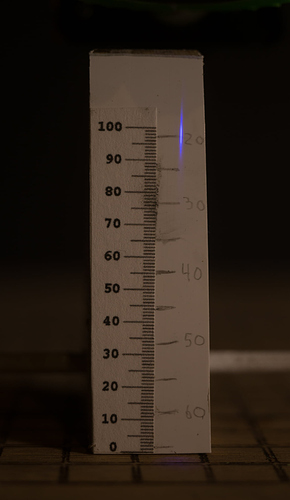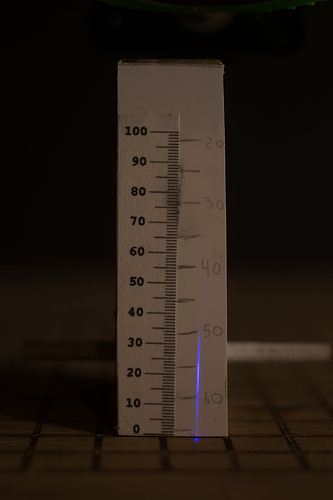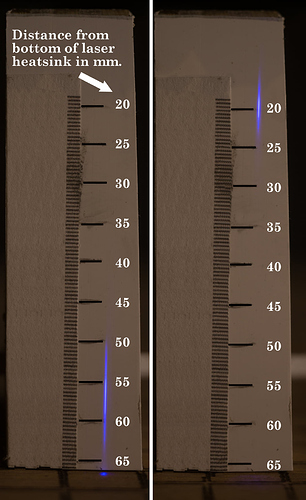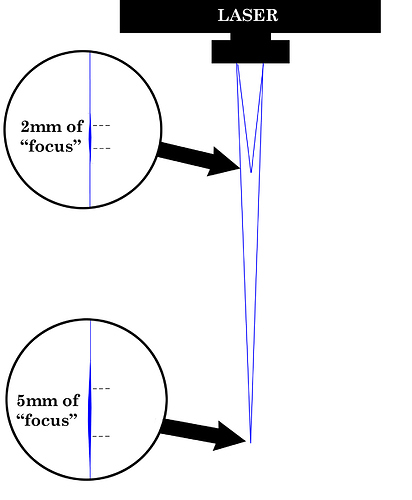I had a lot of trouble focusing the laser. The lens is hard to turn and the beam seems to be dispersed somewhat along the grain of the wood. My solution was to remove the laser, lay it down flat next to a scale and slide it along the scale to find the best focal spot. I used a white hardwood that has less dispersion than the baltic birch plywood. I could not get my laser any closer than 56.5 mm from the surface when attached so I tweaked the focusing ring until it was best around 56/57 mm. I also turned the focusing ring 1 full turn in either direction and deduced that 1 full ring turn changed the focal length about 15 mm. Turning it counterclockwise decreased the focal length for thicker woods.
good stuff and interesting way to determine the focal length.
FYI, I posted about this topic in the other forum - Ortur Diode Laser Testing
How close to a “pin point” did you get?
Many never get too tight a point and it’s often oval.
Once you got the focus did you get etches you were proud of?
Samples! We want to see samples of what your laser can do!
I don’t recall the size of the dot but if you look at the lines pictured above they are all pretty much the same width. The line just got darker with better focus. Much different than CO2 laser focusing.
All I know is with black paper I could see the fuzz around the dot more when out of focus and there was some area between the two ends of fuzziness(CW/CCW) where it wasn’t fuzzy.
Tomorrow I run to HomeDepot and get some white tile and some white spray paint. Going to try some image etching on tiles.
I guess I need to look at “in focus” differently with a diode laser.
correct. Go to the other thread and look at the orange picture taken through a microscope. what you see is one out of focus line and one in focus line. The total width of the line doesn’t change but the energy in those 20 sub-lines is what is focused. I’m guessing the diode laser has 10 tiny diode elements unlike the CO2 laser tube which just has one beam of energy about 3mm in diameter which then gets focused down to .1mm or smaller round point within 50-60mm.
This diode laser seems to have the same “beam” diameter because it’s really 10 beams.
Thanks for the sharing, also the feedback on focusing.
Frankly, the cantilever structure, if add a Z axis adjustable device, the laser module assembly would be too heavy to keep equilibrium.
And on the H-shape structure, it would be ok to add a Z axis adjustable device, and we’re going to the Ortur Model 400, that has the Z axis adjustable device for you to adjust the focusing.
Under a microscope I could not see the 10 tiny lines the other guy was able to see but what I did see what that the line width was different in the X axis vs Y axis. Mine is fatter in the X and thinner in the Y.
What that also means is that when on the edge of cutting through, it’ll cut through on the Y and might not on the X.
I will also get darker/thinner lines in the Y than the X.
From Ortur:
20W: Focal Distance is 30-100mm, Best Focal Distance is 30-40mm (you could set it to the middle: 35mm), Default Focal Distance is 55mm (Because of the tooling limit).
Very interesting…
I haven’t touched my Ortur in a while. Perhaps I will get back to it after I finish the linen cabinet project. Also interested to hear about @Howard_Boehm and the diode laser he added to his CNC. He is presenting in the July 11 CNC SIG Meeting.
-e
Good info. Thanks. Does anyone know if these same guidelines would apply to the 15W Ortur?
Doug,
Do you know if these same focal dimensions would apply to the 15W Orturs?
Thanks,
Jim Sykora
Hi Jim,
I do not know for sure if that is the case but with things I’ve seen and heard I would expect it to be so.
The 15W is not much different than the 20W and would not be surprised if it were found that the only difference was the diode laser element pressed into the heat sink.
It should be reasonably easy to experimentally validate or invalidate.
I’ve seen it mentioned that the Ortur lasers come with this G-2 type lens seen in the picture. The picture someone took showing the focal pattern. Another picture of a G-8 lens showed a 100mm focal length and the wide of the focused beam larger in diameter and over a longer area. Extrapolate what you will from the information.
Thanks Doug for that info. It makes sense. That is a great picture of the laser beam as it converges/diverges.
Hi - I know this is probably not a breakthrough, but I picked up a rubber grommet at Ace hardware and was able to stretch it onto the lens. It was MUCH EASIER to focus.
Thanks Ry. That is certainly “thinking outside the box”.
Jim Sykora
I found a post of someone using an interesting technique to ‘look’ at the laser beam focus relative to distance from the physical laser diode element.
Hi Doug,
Thanks for sharing this. That is a very clever way to “see” the shape of the beam. I assume that this person continually adjusted the focus and looked for the shortest “focus”. In this case, it seemed to be at ~20mm from the laser.
Yes, clever!
Jim
he focused at 20mm for the smallest dot and tested, then focused to 55mm for the smallest dot and tested. He did not focus with the ramp in place. That was to obverse the beam.
if you want to try a new focus knob, I designed one in FreeCAD and posted to Thingiverse.
I found out Ortur makes at least 2 different lens holder knobs with a different diameter o-ring… So there are 2 different ‘knurled’ version of STL files one with a 1.0mm OD and 1.1mm OD.

